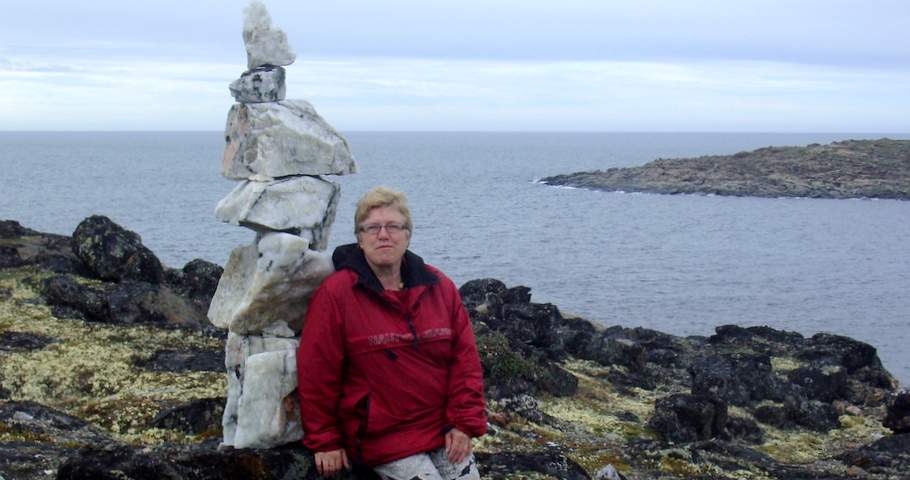There are unsung heroes among the Inuit women
As I watched my good friend Annie, I remember thinking there were unsung heroes among them. More than half of the women were grandmothers. None had white hair; they seem to have retained a full head of dark hair in spite of their age.While I’m walking I have lots of time to think. On this particular stretch between Cobble Hill and Duncan, my thoughts just meandered to how complicated some of our relationships with other women can be. In my generation, we, as women, have learned how to treat other women practically from childhood. Simply by mimicking through observations, we have been influenced by our mothers, grandmothers, aunts and maybe, schoolteachers.
Even more recently, I noticed that in my society, women tend to be competitive, ready to project onto others what we see in ourselves. Perhaps in my society, women have learned to hold unrealistic expectations and demands of other women as they undertake too many projects, take on too many responsibilities and commitments.
Why is it that this behavior is commonplace, from the boardroom to the nursery to the yoga studio?
Examples of women who have impacted me
Other than my mother, there have been numerous women who have influenced me in my life. What I’d like to share with you are examples of Inuit women who have impacted me by their actions and their words.This happened when I was working in Nunavik while I was working silently besides the women in their workshop in one of the communities.
In the eye of the beholder
When I told friends about what I observed, I was told it was “in the eye of the beholder”, but one friend in the South validated that there were groups where she had also felt the same way. I’m letting you decide.I’m reporting what I observed and how I interpreted what I saw. From my observations, their spirit of cooperation was truly remarkable. This led to a common focus around different projects rather than leading each woman to make individual tasks.
There are unsung heroes among the Inuit women
As I watched my good friend Annie, I remember thinking there were unsung heroes among them. More than half of the women were grandmothers. None had white hair; they seem to have retained a full head of dark hair in spite of their age.From different readings, I already knew that, in the Inuit communities, Elders are the ones that dispense wisdom: they are also the ones who make sure memories are passed down and who bind relatives together in families and communities.
Days are spent in simplicity
At the workshop, their days were spent in simplicity. They knew how to make things ingeniously and they used resourcefulness to fix things that need fixing. As I was also invited into the homes of a few of them I can vouch for their listening skills and their willingness to host evenings for family members. These were filled with their loving presence, care and attention. Their warmth and long-term caring was also clearly attested by their willingness to share their private space with anyone needing it.In spite of all their social problems, it was always a joy to see their smiling faces, to hear the sounds of their voices and the way in which they participated at all festivities keeping above the line of despair and discouragement. That has to be a quality more than a fault. It’s another way of dealing with pain, sadness and a lot of heartbreak.
Virtually all the women I met at the women's workshop displayed a vivid sense of humour. Humour seems to be a deeply social attribute in the North, probably contributing to their survival. I also notice how it created harmony and pleasure in the workshop and I figured it must be an important tool in their lives. Perhaps, it contributes to group cohesion, essential in relieving social tensions and maitaining strong solidarity among the women.
They share their knowledge and their calm dignity
Their craftiness and creativity, when creating kamiks and mitts was enviable. Their laughter and their joy were contagious. They actually don’t have to speak much to share their knowledge and their calm dignity. As the children watched silently what their mothers and grandmothers were up to, it was obvious that they were teaching by example.Their life has taught them to be frugal
Their life has taught them to be frugal. Nothing goes to waste. When I invited workers into my home, they left with the leftovers to share with other family members. Their sense of involvement in the community is easily recognizable.They see farther than anyone else in the communities having memories of a lifetime. This should appeal to the next generations as they try to reconcile modern life and the past.
They are honourable and make things happen in spite of issues of poverty, overcrowding and inefficiency with services. They retain a positive outlook.
The women experience fellowship
Their easy comradery, laughter and discreet comments flow, as they experience fellowship at church or at the women’s workshop or, in the privacy of their homes. These nuggets of wisdom I was willing to incorporate in my own life.The women are strong stewards of their communities
I saw all this mostly at church and at the workshop but I found they were strong stewards of their communities. They endorse many responsibilities on their journey as human beings.The healing role of women in the face of communities that struggle with chaos indicates they are moving towards a better world and show a tremendous spirit of generosity for the betterment of their communities.
Building Networks of Solidarity
Some of these women are strong and very connected to their inner self as well as playing a big part in the governance of their community. They are also very aware of the difficulties of their people and the children’s vulnerabilities.Creating Safe Spaces for Sharing
It is my desire that all my work be grounded in culturally relevant gendered responses to issues leading to the vulnerabilities of women and children.Comparing these two realities puts the spotlight on measurements of successes and failures in our ways of dealing with one another, especially women with women. It may be that it is “in the beholder’s eye”, but we have to assume that we are sometimes negatively impacted by other women’s words and actions.
As we do our life work, we have to carve out some real place in our life to stay in our own space.
No Child Should Have to Take the Long Way Home
Children, mothers and communities are the object of this project No Child Should Have to Take the Long Way Home. After all, every child is born with the right to have a better chance at a life free from abuse and violence.
But the children are very vulnerable when they are removed from their birth families. When they are removed not only from their families, but from their community, children lose out on being raised by their own families, in their own communities. As a result, there are increased numbers of Inuit children in child and foster care.
No Child Should Have to Take the Long Way Home is a grassroot initiative to help children in need of loving care, of a protective and stable environment to meet their basic needs for protection, shelter and education in a safe house in their own community.







No comments:
Post a Comment